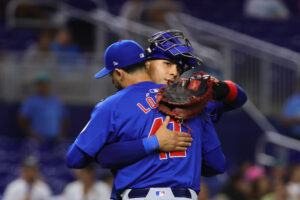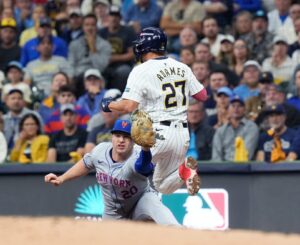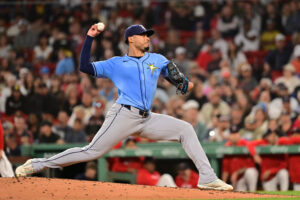1980s Major League Baseball
Just Say No To The 80s
The 1989 World Series between the Oakland Athletics and the San Francisco Giants, dubbed the Battle of the Bay, concluded on October 28th, thus ending what some claim to be a forgettable decade in the history of baseball. But why does 1980s Major League Baseball tend to get overlooked? What is it about that 10-year period in baseball the evokes such malcontent from the baseball fanatic? The answer is simple. The decade is remembered mostly for the negative events that took place.
Astro Turf + Relief Pitching = Less Home Runs
A Nightmare of Astronomic Proportions
Let’s start with the grass or lack there of. It’s every baseball purists bad dream. It keeps them up at night and when they finally fall asleep it haunts their slumber. They try to run but they can’t run fast enough. Eventually they stumble and look back only to see that their pursuer is almost upon them. And just as Astro Turf is about to devour them, the purist wakes up in a cold sweat, checks their smartphone, and breathes a sigh of relief that it’s not the ’80s anymore.
By 1982 10 of the 26 major league fields had Astro Turf. It changed the game, causing the ball to bounce faster and truer. Teams responded by adjusting their lineups to focus more on speed and less on power. This is not necessarily a bad thing, although if you are a fan obsessed with the long ball since the Sultan of Swat revolutionized the game, it could feel like somebody dumped sand in your gas tank. Teams like the St. Louis Cardinals used the speed of Ozzie Smith, Willie McGee, Lonnie Smith, and Vince Coleman to win three pennants and the 1982 World Series.
During the 1980s base stealing reached an all-time high. Every season, minus the strike shortened ’81 season, MLB players stole more than 3,000 bases every year. Rickey Henderson, Tim Raines, and countless others dazzled fans with their swiftness, but their speed changed the game, and turned the focus back to more of a small ball mentality.
A Burden Accepted
Speed was not the only thing that drove drown 1980s Major League Baseball power numbers. Another factor in the deflated home run totals was the increased reliance on relief pitching. For the first time in MLB history batters were consistently facing two to three to four pitchers a game and the constant adjustment to different pitchers negatively affected offensive power. Relief pitchers such as Rollie Fingers, Bruce Sutter, and Steve Bedrosian thrived and even won Cy Young Awards. Also, the role of the closer gained grater prominence and top performers like Dennis Eckersley, Dan Quisenberry, and Lee Smith closed the door on last minute rallies in a way that had never been done before.
Newly awakened pitching dominance and a broader focus on speed-driven offense caused the American public to turn away from baseball and find immediate excitement in other places such as football and basketball.
Strike
In the midst of diminishing power numbers there was the 1981 players strike. In the middle of the ’81 season players walked out and from June 12th to August 10th there was no baseball. Why? Because the owners wanted compensation for losing players to free agency. The players said that equal compensation undervalued free agency, so they called a strike. The public mostly blamed the owners, but ultimately it hurt the game and left a dark stain at the beginning of the decade.
Pittsburgh Drug Trials
Since the advent of baseball drugs have been used by ballplayers for various reasons. From alcohol to tobacco to amphetamines to cocaine to steroids, the game has long struggled to stay clean much to the detriment of its public image. In 1980s Major League Baseball, cocaine was rampant. During September of 1985, many MLB players were called to testify before a Pittsburgh grand jury. In exchange for immunity numerous members of the Pittsburgh Pirates and others ballplayers from various clubs including Dale Berra (Yogi’s son), Dave Parker, Keith Hernandez, Vida Blue, Tim Raines, and Jeffrey Leonard testified.
The result was the conviction of seven drug dealers and the suspension of 11 players. Although commissioner Peter Ueberroth commuted the suspensions for fines and community service. Regardless of punishment baseball’s reputation suffered in the eyes of a disapproving public.
And Then There Was Collusion
The dictionary defines collusion as a “secret agreement or cooperation especially for an illegal or deceitful purpose”. But why would this happen in major league baseball, you ask? Because team owners want to make as much money as possible. And if the owners have a collective secret agreement to not get into bidding wars over free agents then they can keep costs down and increase profits. Not cool, owners. Not cool at all.
So what does this have to do with ’80s baseball? Well, free agency was still pretty new in the 1980s. The owners hadn’t had enough time to get used to the chunk that free agency took out of their bank accounts. So, they decided to do something about it. They settled on a collusion party for three years. During the ’85, ’86, and ’87 off-seasons, the owners colluded to limit free agent contracts. The matter was solved in 1990 and an arbitrator sided with the players. The players received a hefty settlement and commissioner Ueberroth–you remember him from the drug trials–resigned.
Don’t Worry The Bad News Continues
Oh no, Pete Rose. The all-time hits leader. Beloved by millions. On August 23, 1989 he was banned from Major League Baseball for life. Although he still proclaims his innocence, Rose was accused, and by accepting banishment, convicted, of not only betting on other baseball teams, but on his own as well. That’s a big no no. Tough luck, Charlie Hustle. The hits just keep coming.
And Another One
The ’80s just couldn’t help squeezing in one more bummer before the decade ended and this time it would be on baseball’s biggest stage. Game three of the 1989 World Series between the A’s and Giants was to take place on October 17th. The actual game didn’t happen until October 27th because at 5:04 pm on the 17th a 6.9 magnitude earthquake rocked the San Francisco Bay Area. 63 people lost their lives along with six billion dollars worth of damage. The A’s would go on to sweep the series 4-0, but most would remember the lopsided contest for game three and watching the television feed break up while Al Michaels said, “I’ll tell you what…we’re having an earth…”
The Loma Prieta earthquake tied a nasty little bow on ’80s era baseball. No wonder people try to forget a decade full of so much baseball heartache.
Players Mentioned: Ozzie Smith, Willie McGee, Lonnie Smith, Vince Coleman, Rickey Henderson, Tim Raines Rollie Fingers, Bruce Sutter, Steve Bedrosian, Dennis Eckersley, Dan Quisenberry, Lee Smith, Dale Berra, Dave Parker, Keith Hernandez, Vida Blue, Jeffrey Leonard, Pete Rose
Main Photo: Embed from Getty Images






